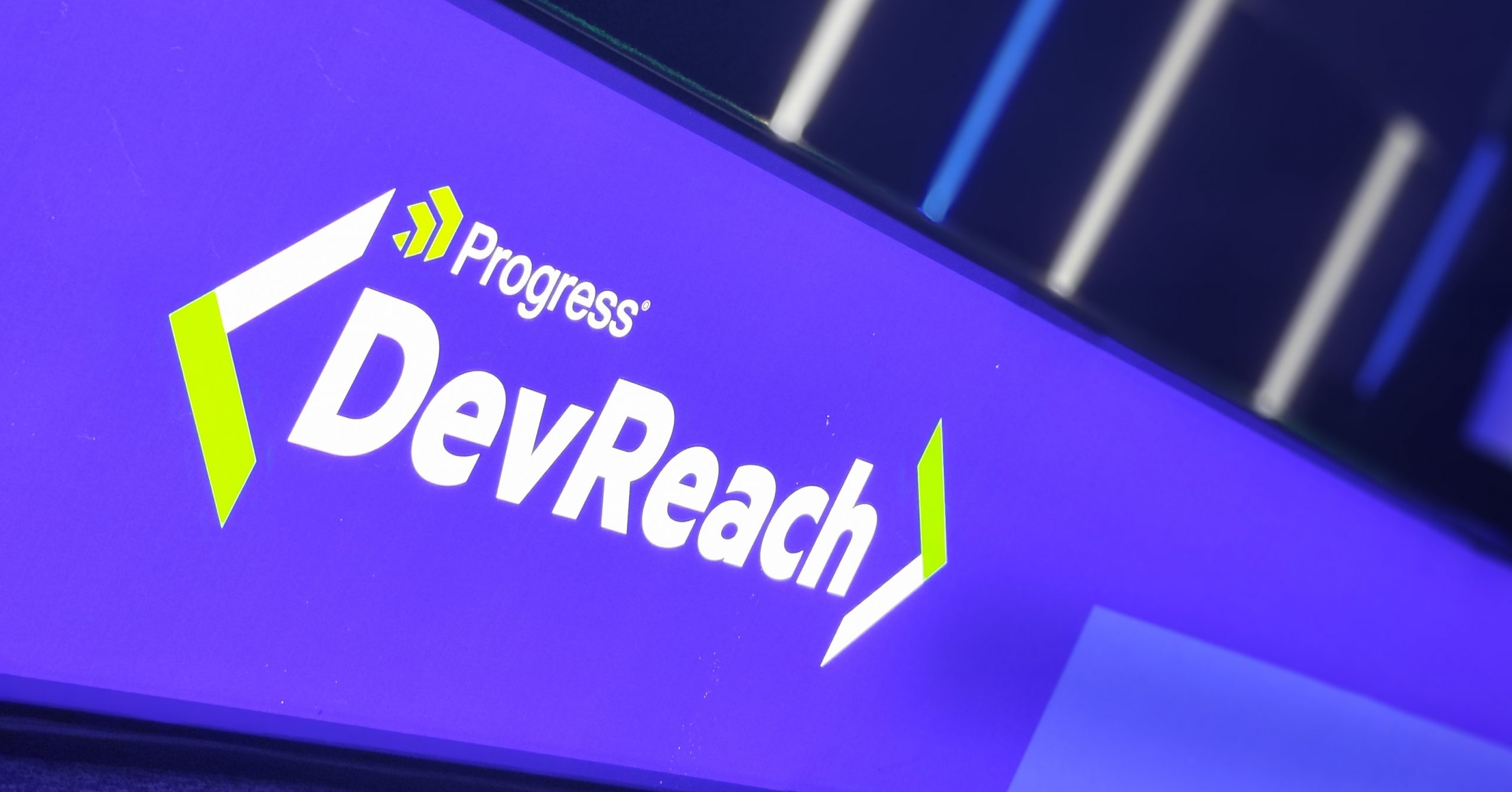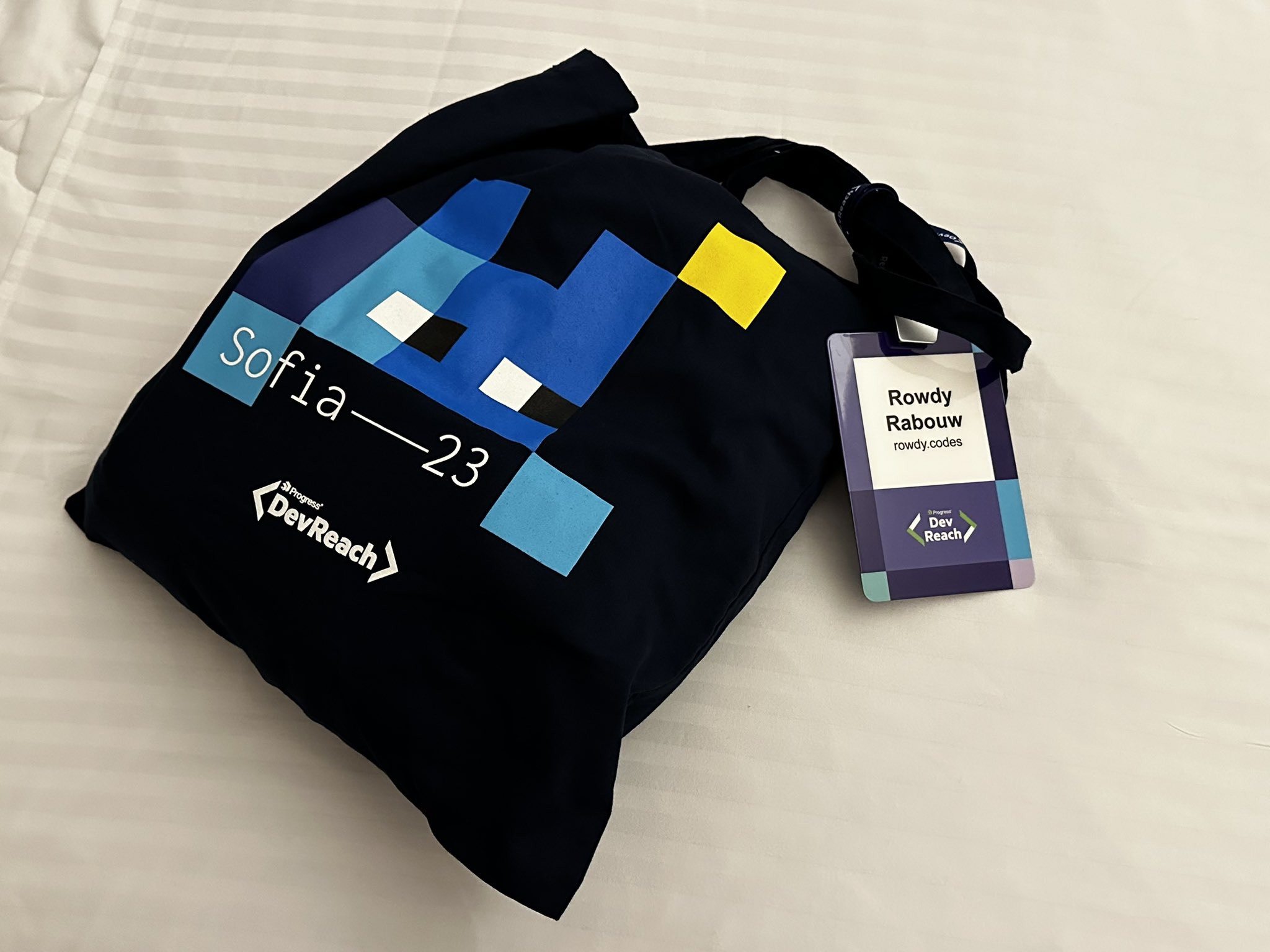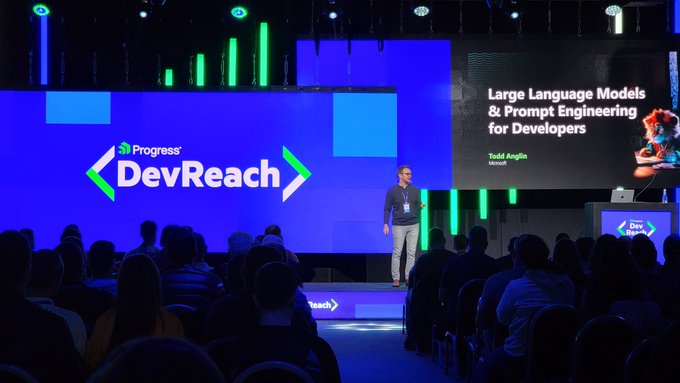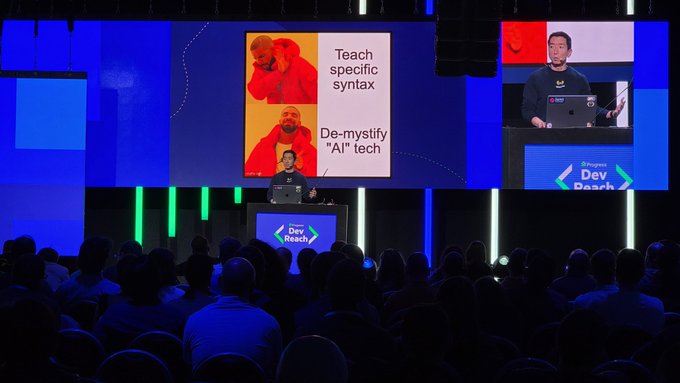Progress DevReach 2023: Software solutions in Sofia
Progress hosted its DevReach 2023 developer conference programme in Sofia, Bulgaria this month. This event aimed to show off the company’s platform and also showcase key technology partners, who guested to detail the total toolchains available to work with here.
After a welcome from Alyssa Nicoll, senior developer advocate at Progress, the show started with Microsoft.
.Net reinvention
VP of product for Azure developer at Microsoft Scott Hunter kicked off with a .Net session explaining how the platform was reinvented back in 2014 to be suitable for developing apps of any kind (mobile, desktop and more) and for any platform (Windows, Linux, Mac OS-X and onwards).
With this 21-year-old technology now open source and the technology being quite ‘late’ (Hunter’s own term) to becoming open source almost a decade ago now, the platform itself now has some 53,000 code commits, many of which will have contributed to current functionality.
Straight into command line mechanics, Hunter explained how ‘primary constructors’ work in the latest iteration of .Net and how Microsoft has worked to make code construction more efficient and ‘get rid of a certain amount of junk’ that developers in the past would have to work they way around in boilerplate code.
“When we decided to reboot .Net back in 2014, we asked ourselves why any developer would choose it over any other technology – and at that point, we really focused on performance as a key differentiator,” said Hunter. If we look at some of the more recent improvements that Microsoft has brought forward in .Net 8, we can see that tasks work up to 50% faster for certain functions.
“Semantic Kernel (SK) is a lightweight SDK that lets you [developers] mix conventional programming languages, like C# and Python, with the latest in Large Language Model (LLM) AI ‘prompts’ with prompt templating, chaining, and planning capabilities,” notes John Maeda in a Microsoft developer blog.
This enables developers to build applications to perform tasks like summarising a lengthy chat exchange, flagging an important ‘next step’ in a to-do-list via Microsoft Graph (the company’s API developer platform that connects data in Microsoft365, Windows and other platforms), or planning a full vacation instead of just reserving a seat on a plane.
As a whole, Progress DevReach 2023 covered in the .NET tracks included sessions devoted to MAUI, SignalR, gRPC, ASP.NET and Blazor. The event’s JavaScript segments covered TypeScript, Angular, performance, architecture and testing. Other areas covered included responsive web, usability testing, modelling, mutation testing and authentication.
Neurodivergent neurotypicality
Progress also hosted sessions devoted to the needs, skills and opportunities for the class of individuals we know as neurotypical people. While many events have sessions devoted to the requirements of people on the autistic spectrum or those that have ADHD, dyslexia or anxiety, neurotypical people have brains that work in broadly the same way as everyone else around them. This may be one of the first times we have seen an event make a comment on the unique talents that neurodivergent people have over and above their neurotypical peers.
A thoughtful session was staged on morning one of this event entitled Ethically Wired: Computer Ethics for Technologists, presented by Selam Moges in her capacity as software engineer at medical software and hardware device company Apella.
Moges explained that as technology continues to advance, it is becoming important for those in the tech industry to understand the ethical implications of their work and its far-reaching consequences for individuals, communities and entire societies. She strongly suggests that without a solid understanding of computer ethics, it is all too easy for technology to be developed and deployed in ways that harm rather than help.
Usability testing
Kathryn Grayson Nanz, developer advocate at Progress presented an upbeat session under the title – Usability Testing without a UX Specialist.
She said that when it comes to user research, user testing and user feedback – the end user is at the heart of everything that we build. However, for many companies, making conversations with real users actually happen is a real challenge – especially if they don’t have a UX specialist on the team. This session offered a hands-on approach to what the conference listed as a ‘basic user testing programme’ that any developer could oversee the execution of.
Talking about how usability testing should really be applied in the workplace, Grayson Nanz advocates that all testing initiatives in this space should have a defined start and end point. Defining ‘desire paths’, Grayson Nanz says that users often find use cases for an application that were never part of the existing design for the application – think about a formally laid out pavement or path and the cut-through that people often take over a patch of grass i.e. it is what people really want from a user experience at all levels.
New & established users
We can think about the fact that there are both established flows and new flows for an application testing process. Talking to new users is a good way of finding out how established users differ from new users who know nothing about how an application and its UI are supposed to be used in an ideal world.
“It’s worth thinking about creating as diverse a testing party as possible when getting a user testing group together. If a testing group is not truly diverse (across age, gender, race and so on) then engineers should perhaps take their tests with a grain of salt,” said Grayson Nanz. “The procedures and process are still worth executing, but it’s important to remember what you are dealing with in any given usability testing scenario.”
Looking at everything from on-camera tests to in-person tests, Grayson Nanz prefers the in-person interpersonal process which enables the tester to observe a bit more body language, to control the device that the testing is carried out on and more. That said, remote tests can help testers test applications on the real-world device that the user would be using and in the workplace scenario that the user would actually experience.
Back with key Progress partner Microsoft again and principal cloud advocate lead Todd Anglin is a card-carrying Redmond employee who ‘currently works at Microsoft’ he said, with some swagger.
Delivering a session entitled Large Language Models (LLMs) and prompt engineering for developers, Anglin spoke of the need to consider the use of these new and emerging technologies with some care.
Talking about the evolution of AI, ML and Deep Learning all the way through to the new era of generative AI, Anglin says that we’ve been on an AI journey. Where we used to develop AI in a very ‘task-specific’ way where we would manually label data (in a time-consuming and expensive way) perhaps some five years ago, time has moved on in the era of the LLM. The difference with LLMs is that we can build from one massive foundation model which are trained on massive amounts of data that can be repurposed for a huge range of tasks without us having to change them.
LLMs – no memory, no learning
With a look into how LLMs actually work, Anglin looked at how a model might answer the question ‘what is the capital of Bulgaria?’ – the model can draw from Wiki pages, blogs and even videos and other socially distributed data. The very unguarded openness that open LLMs can draw from for any given point in time should let developers know about the power, but also the risks associated with them. When we get a wacky answer from gen-AI models it’s important to remember that LLMs have no memory and do not learn, so they may say something completely wrong quite innocently.
With a range of other sessions on offer throughout the afternoon – including another thoughtfully delivered presentation titled ‘Making interactions accessible to all users’ presented by ‘frontend consultant’ Anuradha Kumari – the event’s day one session programme closed out with the host of .NET Rocks & RunAs Radio Richard Campbell talking about the future of software application development.
More cowbell?
Given that Progress describes itself as an application development and infrastructure software company, there’s a definite feel for both frontend and backend on show here at this event. Going further, this is almost Progress stepping back from labelling the show as a Progress event (the company’s logo is in small letters, allowing the word DevReach to be the star) and so it’s very much a developer event with command line demos on the main keynote stage before we had even seen 9.30 am go past. If anything, we could take a bit more core brand cowbell if we had to. The fact that the event is staged in Sofia, Bulgaria is obviously somewhat extra interesting as well, they clearly know their Bayesian algorithms from their Banistas and their Böreks – that’s baked Bulgarian pastry if you need a translation.
#DevReach23 – cheers and “Наздраве!” (nahz drav vee).







